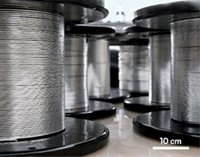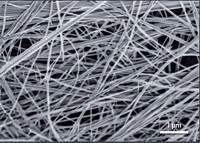Advertisement
Grab your lab coat. Let's get started
Welcome!
Welcome!
Create an account below to get 6 C&EN articles per month, receive newsletters and more - all free.
It seems this is your first time logging in online. Please enter the following information to continue.
As an ACS member you automatically get access to this site. All we need is few more details to create your reading experience.
Not you? Sign in with a different account.
Not you? Sign in with a different account.
ERROR 1
ERROR 1
ERROR 2
ERROR 2
ERROR 2
ERROR 2
ERROR 2
Password and Confirm password must match.
If you have an ACS member number, please enter it here so we can link this account to your membership. (optional)
ERROR 2
ACS values your privacy. By submitting your information, you are gaining access to C&EN and subscribing to our weekly newsletter. We use the information you provide to make your reading experience better, and we will never sell your data to third party members.
Analytical Chemistry
Freeze-drying extends paper biobatteries’ shelf-life
Paper batteries containing electric bacteria survive at least four weeks rather than days
by Celia Arnaud
August 20, 2018

Paper-based batteries fueled by bacteria have the potential to be a low-cost power source for biosensors that diagnose diseases. But such batteries’ shortcomings include limited shelf lives of a couple of days. Seokheun (Sean) Choi, an electrical engineer at Binghamton University, has extended the shelf life of paper-based biobatteries by freeze-drying electric bacteria in paper and then rehydrating them to turn the batteries on. He presented the work Sunday at the American Chemical Society national meeting in Boston in a symposium in the Division of Analytical Chemistry.
Choi made biobatteries by embedding electric bacteria, so-called exoelectrogens, in pores in paper. As a byproduct of their respiration, these bacteria export electrons that can be harvested and stored in batteries. Choi engineered the paper to be conductive by adding a water-dispersed conducting polymer mixture, which improved performance relative to previous biobatteries by creating a conductive anodic reservoir that allowed electrons to be harvested from more of the bacteria. Previously, electrons could be harvested only from bacteria near the anode. In previous work, he used multiple paper layers to make biobatteries. In this work he fabricated multiple battery cells on a single sheet of paper and folded the paper to yield seven battery cells connected in series.
For long-term storage, Choi freeze-dried the batteries after adding the bacteria. But he didn’t just freeze-dry the bacteria, which has been done before. He also included a pouch of cell-culture medium, which can be released by manually squeezing. The medium rehydrated the cells and provided them an energy source. He was able to store the batteries for four weeks. He didn’t optimize the storage conditions, so he doesn’t know the maximum storage time.
Each seven-cell battery pack produced about 88 microwatts. Three of the seven-cell battery packs produced enough power to run a red light-emitting diode, and two of the battery packs powered an electric calculator.
George M. Whitesides, a Harvard University pioneer in paper-based devices, was impressed with the power density Choi achieved with the paper batteries. He also pointed out that under the right conditions the cellulose in the paper could potentially serve as a food source for bacteria in addition to serving as a scaffold.





Join the conversation
Contact the reporter
Submit a Letter to the Editor for publication
Engage with us on Twitter